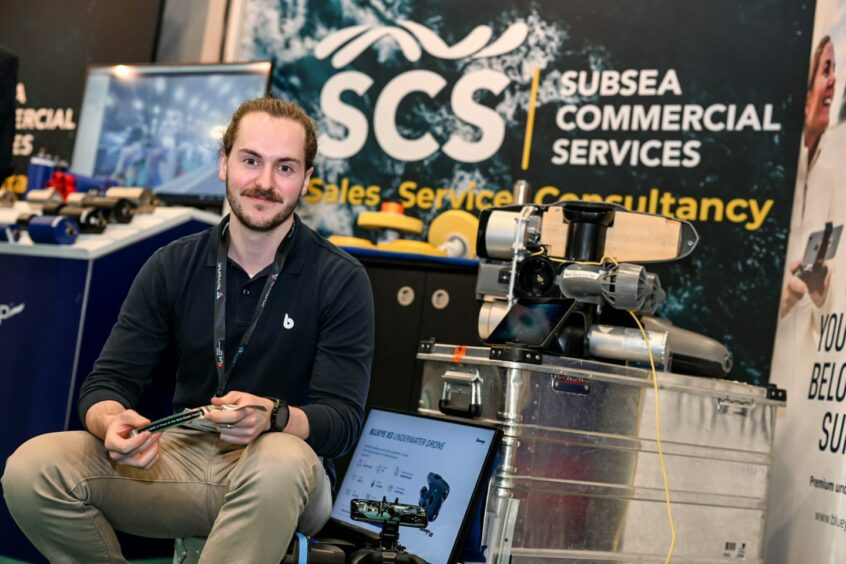
A piece of shrapnel from the sabotaged Nord Stream pipeline is on display at Aberdeen’s Subsea Expo alongside the ROV that captured the first footage of the damage.
Blueye Robotics, the Norwegian manufacturer of remotely operated vehicles (ROV), used the Blueye 3X on display at its stall to capture footage of the pipeline after it was contacted by a Swedish newspaper that wanted to go down and get footage of the damage.
Petter Sjursen, product engineer for the firm, said: “After the Nord Stream explosions in September there was a lot of talk about wanting to go down there and see what happened with our own eyes.
“On the first trip, we went out with one man and the drones and actually got the first published images of the Nord Stream pipeline after the explosion.”
Following this, the BBC got in contact with the firm and a second trip was arranged, this was “a slightly bigger trip” as Mr Sjursen describes.
“The second time we went down with the two people and two drones, so we took a smaller vessel out three hours straight out into the sea.”
The second expedition used “multibeam sonar” to locate the pipeline, which allowed the team to “drive over the with the ROV and get visual footage of the pipe.”
To obtain the shrapnel on display at Subsea Expo the team used a “gripper arm attached to one of the drones.”
Mr Sjursen explains: “We were trying to locate a piece of the pipe that we could pick up and after a while, we actually managed to find a piece of the pipe.
“So we spent a little while grabbing onto it with the gripper and then we swam up to the surface.”
Gathering footage and retrieving a piece of the sabotaged Nord Stream Pipeline is something that Petter Sjursen and the Blueye Robotics team are proud of and they believe that this accomplishment demonstrates the capabilities of the ROVs the firm manufactures.
“What the Nord Stream trip with these drones actually shows us is that with just one or two guys, you can actually go out and get footage of the critical infrastructure at almost a 100-metre depth and you don’t need the big vessels and you don’t need the big work class that was used to do this anymore,” Mr Sjursen said.
“You can actually use smaller inspection class ROVs to do this in quite a simple manner.”
To get caught up on everything that happened surrounding the Nord Stream pipeline in 2022, read Energy Voice’s complete timeline of events here.
Recommended for you

